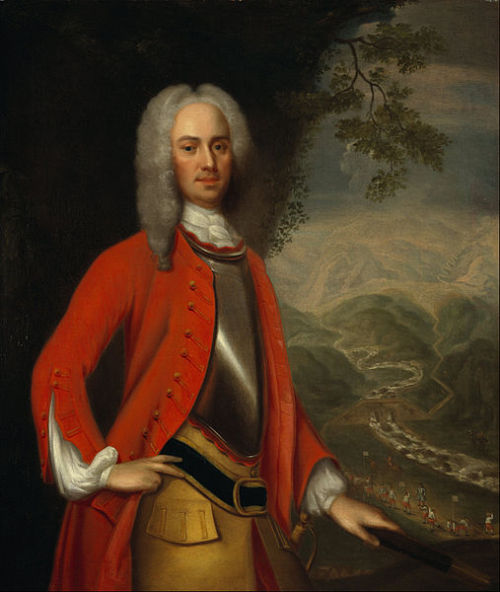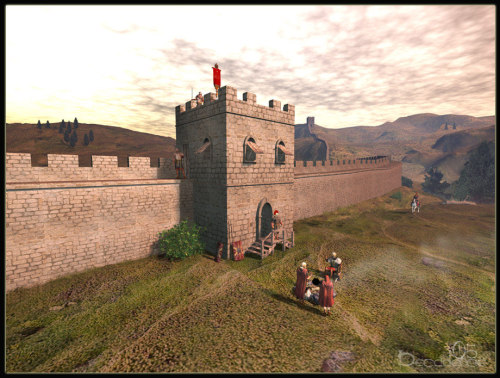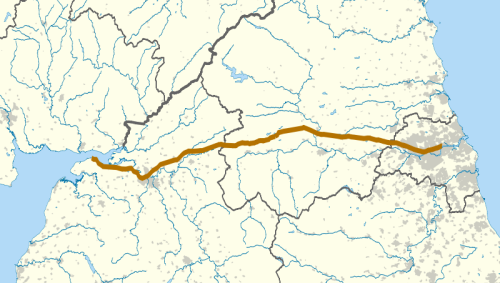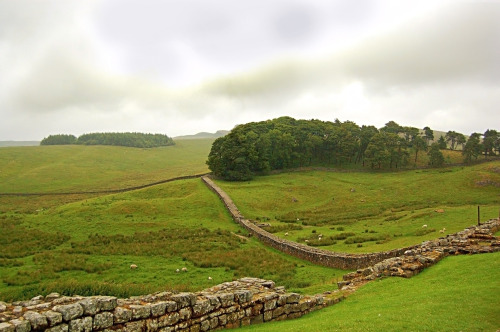peashooter85:Redcoats, Jacobites, and the Destruction of Hadrian’s Wall in 1746.During ancient Roman
peashooter85:Redcoats, Jacobites, and the Destruction of Hadrian’s Wall in 1746.During ancient Roman times Hadrian’s wall was certainly an impressive structure. At 76 miles long and 16-20 feet high, it dominated the border between what is now Scotland and England. It was also complete with a number of forts and towers, which would have been manned and patrolled just in case the rowdy Caledonians to the north decided to make trouble. Today, however, very little of Hadrian’s Wall remains. Now the impressive structure is reduced to only a few feet in height, and much of the wall is gone entirely. So what happened to Hadrian’s Wall? Over the centuries much of the stone masonry of the wall was looted to build houses, churches, and other structures. However most of the blame for the destruction of Hadrian’s Wall lies on the shoulders of a British Army General named George Wade.Gen. George Wade was commander of British forces in Scotland. More than a soldier, Wade was a builder, and was responsible for building 240 miles worth of roads and 30 bridges within Scotland. General Wade only had a few small rebellions to put down, but for the most part Scotland was quiet and peaceful.That was until in 1745 when Charles Stuart, aka “Bonnie Prince Charlie” returned to Scotland in order to reclaim the British Throne. Charles was the descendant of James II of England, who had been ousted by the English and replaced with William of Orange in 1689. Ever since “The Glorious Revolution” the Stuart family had lived in exile, all the while plotting to return to Britain to reclaim the throne. Once in Scotland Charles raised an army of loyal Scottish Highlanders. Known as “Jacobites”, the supporters of Charles defeated the British Army in Scotland and began an invasion of England. In the wake of the Jacobite Uprising, Gen. Wade began to martial his forces in order to ensure the rebellion did not spread. He was anxious to move his soldiers from Newcastle in the east to Dumfriesshire in the west. However there was no clear or easy route for his armies to march on. Thus General Wade, an experience road-builder, planned the construction of a large military road that would literally pave the way. The route of General Wade’s road was certainly not arbitrary or accidental. It essentially followed the route of Harian’s Wall. Gen. Wade knew he had no time to gather and quarry the materials needed to build a 76 mile long road. However, along the route of his road was an ample supply of cut limestone and sandstone in the form of an ancient wall built during a long forgotten era. The stones were perfectly cut for Gen. Wade’s road, both for foundation stones and paving stones. So essentially Gen. Wade’s men pried the stones from their mortar and laid them a short distance away to form Wade’s military highway. At some points, the highway even used the foundation of Hadrian’s Wall itself as the foundation for the road. The construction of the military road was a great success. The destruction of Hadrian’s Wall was a disaster. The once mighty wall that dominated the landscape of Northern England had been reduced to a pathetic stub. Much of the wall was completely gone. The road itself was not successful in General Wade’s overall strategy, as the Jacobites easily maneuvered around his forces, invading England and almost successfully achieving their goal of retaking the British crown. The Jacobite rebellion would later be crushed, and would be the last attempt by the Stuarts to reconquer Britain.In the 1830’s a lawyer from Newcastle named John Clayton began to research Hadrian’s Wall and took steps to preserve it. Clayton bought up land from farmers to halt its further destruction and even sponsored projects to rebuild several sections of the wall. He also conducted the first archaeological excavations of many wall sites. By the early 1900’s the land was purchased by the National Trust, a British conservation organization. Today it is a United Nations World Heritage Site of and strict laws govern its preservation. As for Gen. Wade’s military road, much of it was paved over, providing the partial foundation of B6318 today. -- source link



